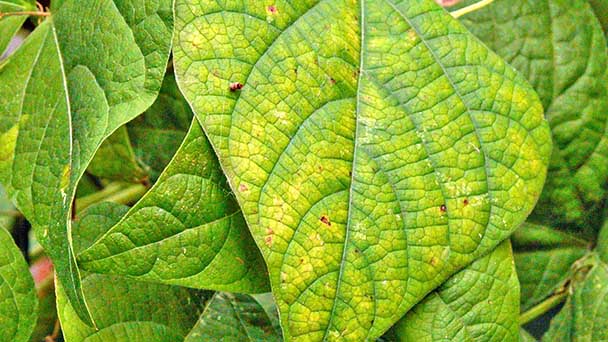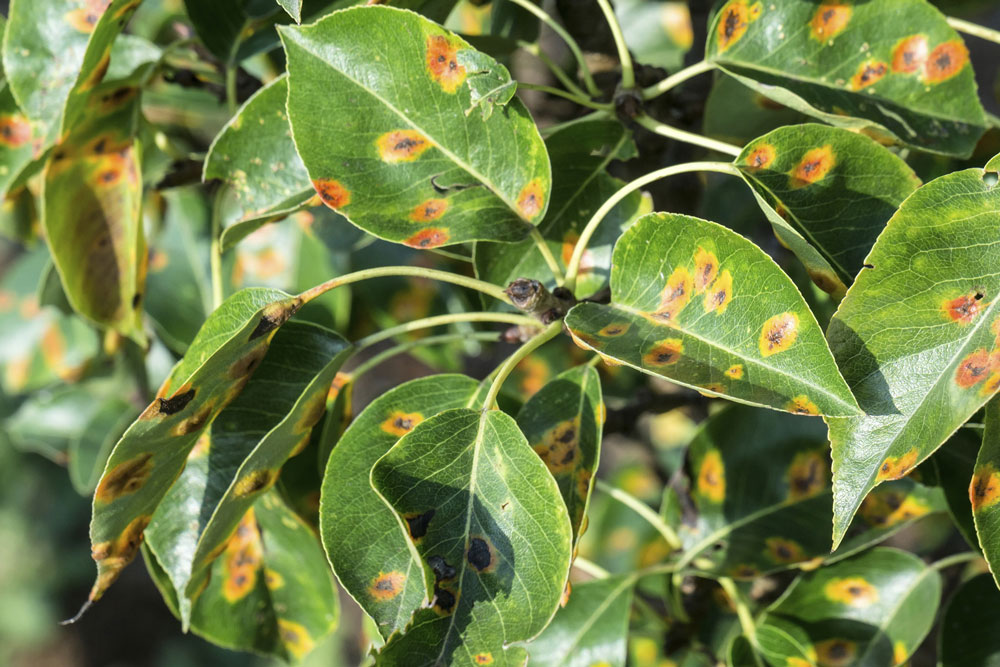Plant diseases caused by nutrient deficiency
Written by Joy
Sep 28 2020

Plant diseases caused by nutrient deficiency sometimes even lead to reducing the production.The crops were short of fertilizer and did not grow well. After supplementing the fertilizer, the crops quickly worked. There are also a few people who do not apply fertilization scientifically and overuse them, resulting in fertilizer damage. In fact, plants will show corresponding symptoms when they lack certain nutrients in their bodies. Today, the symptoms of plant nutrient deficiency and overdose provide a reference for everyone to plant scientifically.
 Symptoms of plant diseases caused by nutrient deficiency:
Symptoms of plant diseases caused by nutrient deficiency:
2. Small molecular sugars and amino acids cannot be converted into macromolecular structures such as cellulose, lignin and protein in time, and become nutrient sources for diseases and insect pests. Therefore, excessive nitrogen has serious diseases and insect pests, and plants are prone to lodging, and are not resistant to wind, drought or drought. cold.
3. Excessive nitrogen causes symptoms of potassium, calcium, magnesium and boron deficiency.
2. Severe excess phosphorus can also cause symptoms such as iron, magnesium, and copper deficiency.
Plants with strong chlorine tolerance: sugar beet, sugar cane, spinach, onion, eggplant, rice, millet, sorghum, wheat, corn, etc.
Plants with moderate chlorine tolerance: cotton, soybeans, rapeseed, green onions, radishes, tomatoes, citrus, grapes, tea, etc.
Plants intolerant to chlorine: tobacco, lettuce, kidney beans, watermelon, and most fruits.
Hazard manifestations: When calcium is deficient, the tip of the leaf is bent yellow and white, the leaf edge is wrinkled up or down (parachute shape), and sometimes mucus is secreted.
The top young leaves often turn dark brown, which can cause the meristems such as the top buds, lateral buds, and root tips will rot and die, showing symptoms, such as scorching leaf disease in cabbage and heartburn in dried Chinese cabbage.
When calcium is deficient, the roots of plants often turn black and rot.
Calcium deficiency can also cause umbilical rot in tomatoes, peppers, watermelons, and eggplants.
Apples have bitter pit disease and water heart disease, and grapes, watermelons, and citrus fruits have cracked fruits.
Hazard performance: The first symptom of phosphorus deficiency is that the whole plant is short and the shape of the leaves may be distorted. In severe phosphorus deficiency, necrotic areas may appear on the manifestation site.
When phosphorus is deficient, the old leaves are first affected, especially at low temperature, the phosphorus deficient plants often turn purple or red, the stems are purple-red and lose their luster. Phosphorus deficiency in production is mostly due to a poor root system, which affects its absorption of phosphorus.
Hazard manifestations: Symptoms first appear as variegated or yellow spots on the old leaves, and then necrosis on the leaf edges.
Symptoms of potassium deficiency often first appear on the lower leaves, and as the deficiency intensifies, it gradually spreads to the top, and usually starts to turn yellow and scorched from the leaf edge.

Nitrogen excess
1. Plants grow vigorously, with dark green leaves, large leaves, long internodes, greedy green and late maturity, and low fruit setting rate.2. Small molecular sugars and amino acids cannot be converted into macromolecular structures such as cellulose, lignin and protein in time, and become nutrient sources for diseases and insect pests. Therefore, excessive nitrogen has serious diseases and insect pests, and plants are prone to lodging, and are not resistant to wind, drought or drought. cold.
3. Excessive nitrogen causes symptoms of potassium, calcium, magnesium and boron deficiency.
Phosphorus excess
1. Excessive phosphorus inhibits the absorption of zinc, showing symptoms of zinc deficiency.2. Severe excess phosphorus can also cause symptoms such as iron, magnesium, and copper deficiency.
Iron excess
Southern paddy fields or high-humidity soils change ferric iron to ferric iron under acidic conditions, resulting in excessive iron poisoning. Iron poisoning plants are accompanied by potassium deficiency. Symptoms are brown spots on leaf edges and tips, dark green leaves, gray-black roots, and easy rotten.Excessive zinc
The tender green tissue becomes gray and white, brown spots appear on the stems, petioles and leaf bottoms, and the root system is short and rare.Manganese excess
It hinders the absorption of iron, calcium and molybdenum by plants, and often presents symptoms of molybdenum deficiency. The leaves appear brown spots, the leaf margins become albino or purple, and the young leaves curl. The root system turns brown, the root tip is damaged, and new roots are few.Boron excess
Higher concentrations of boron in soil can be poisoned, especially in dry soils. Excessive boron leads to potassium deficiency. The typical symptom is golden edge, that is, the leaf margins are most likely to accumulate boron and appear chlorosis and yellow, and the severe ones are scorched and necrotic.Excessive molybdenum
Symptoms are not easy to show, and most of them are chlorosis. Molybdenum poisoning can occur when livestock eat legumes that contain too much molybdenum, which can be relieved by injection of copper preparations such as glycolic acid.Chlorine excess
Symptoms: Slow growth, short plants, small and yellow leaves, scorched leaf edges and curling upwards, death of old leaves and root tip death.Plants with strong chlorine tolerance: sugar beet, sugar cane, spinach, onion, eggplant, rice, millet, sorghum, wheat, corn, etc.
Plants with moderate chlorine tolerance: cotton, soybeans, rapeseed, green onions, radishes, tomatoes, citrus, grapes, tea, etc.
Plants intolerant to chlorine: tobacco, lettuce, kidney beans, watermelon, and most fruits.
Symptoms of crop deficiency
During the growth process, crops are prone to lack of nutrients due to various reasons, showing different or similar symptoms. At this time, you need to pay attention to distinguish, distinguish the different symptoms of nutrient deficiency in crops, and make supplements in time, so that the healthy growth of crops is also beneficial to the implementation of scientific fertilization.Calcium deficiency
Performance parts: Firstly, symptoms are shown in the vigorous and young parts such as new leaves, top buds, and fruits.Hazard manifestations: When calcium is deficient, the tip of the leaf is bent yellow and white, the leaf edge is wrinkled up or down (parachute shape), and sometimes mucus is secreted.
The top young leaves often turn dark brown, which can cause the meristems such as the top buds, lateral buds, and root tips will rot and die, showing symptoms, such as scorching leaf disease in cabbage and heartburn in dried Chinese cabbage.
When calcium is deficient, the roots of plants often turn black and rot.
Calcium deficiency can also cause umbilical rot in tomatoes, peppers, watermelons, and eggplants.
Apples have bitter pit disease and water heart disease, and grapes, watermelons, and citrus fruits have cracked fruits.
Phosphorus deficiency
Part of manifestation: Symptoms will appear on leaves, fruits and stems. The upper and lower leaves will be harmed, and the old leaves will be affected first.Hazard performance: The first symptom of phosphorus deficiency is that the whole plant is short and the shape of the leaves may be distorted. In severe phosphorus deficiency, necrotic areas may appear on the manifestation site.
When phosphorus is deficient, the old leaves are first affected, especially at low temperature, the phosphorus deficient plants often turn purple or red, the stems are purple-red and lose their luster. Phosphorus deficiency in production is mostly due to a poor root system, which affects its absorption of phosphorus.
Potassium deficiency
Performance parts: it mainly appears in the old leaves of the lower part of the plant.Hazard manifestations: Symptoms first appear as variegated or yellow spots on the old leaves, and then necrosis on the leaf edges.
Symptoms of potassium deficiency often first appear on the lower leaves, and as the deficiency intensifies, it gradually spreads to the top, and usually starts to turn yellow and scorched from the leaf edge.
Latest Updated
- Benefits of Bugleweed - 7 Science-backed Health Benefits
- Bugleweed Dangers & Side Effects - Is It Poisonous?
- How to Plant Evergreen Trees - What You Should Know
- When to Plant Evergreens - Grow Guide for Evergreen Trees
- 12 Wonderful Evergreen Shrubs for Your Garden
- 12 Popular Evergreen Plants with Pictures for Beginners
- When And How To Prune A Lilac Bush Like a Pro
- How to Grow & Care for Lilac Vine (Hardenbergia Violacea)
- Japanese Lilac Tree (Syringa Reticulata) Care & Propagation Guide
- Shumard Oak Pros and Cons - What to Know
Popular Articles
- Winter maintenance of Antirrhinum Majus
- How to Grow Terminalia Mantaly Tree
- How to Grow and Care for Crossostephium Chinense
- How to grow Antirrhinum Majus in spring
- Peristeria Elata (Dove Orchid) Profile: Info & Care Guide
- Underwatered Snake Plant (Sansevieria Trifasciata) - Signs And How To Fix
- How to Care for Brazilian Jasmine Plant (Mandevilla Sanderi)
- How to Grow & Care for Graptopetalum Purple Delight in Summer
- Rosa Chinensis (China Rose): Plant Growing & Care Tips
- How to Care for Baby Sun Rose (Aptenia Cordifolia)